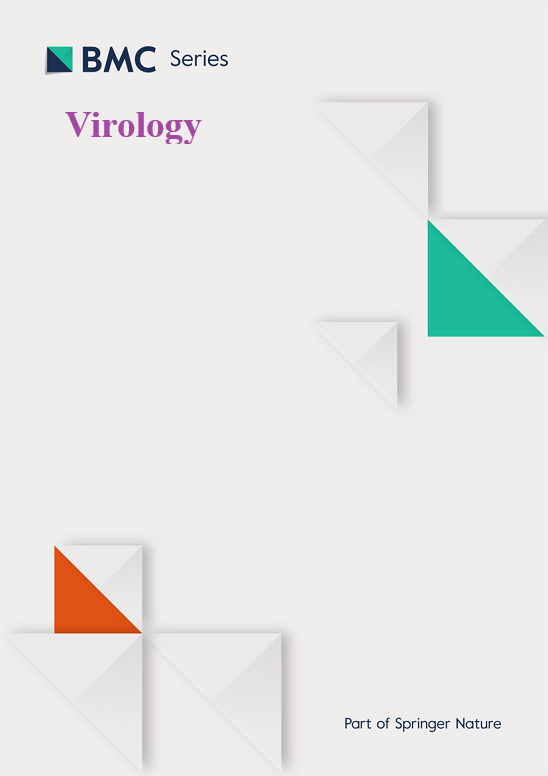针对健康成年人的 SARS-CoV-2 野生型、Omicron BA.1 和 Omicron BA.4/5 疫苗原型、单价适应型和二价疫苗免疫原性的荟萃分析
IF 2.8
3区 医学
Q3 VIROLOGY
引用次数: 0
摘要
尽管 COVID-19 已不再被列为第一紧急公共卫生事件,但它仍对全球人口的健康构成严重威胁。因此,开发具有最佳成分的 COVID-19 疫苗至关重要,这种疫苗能引起针对各种 SARS-CoV-2 变体的广谱中和反应。本荟萃分析旨在比较原型、单价适应型和二价 COVID-19 疫苗对健康成人中的原型 SARS-CoV-2、Omicron BA.1 变体和 Omicron BA.4/5 亚变体的免疫原性。我们利用 4 个医学数据库检索原始研究,并采用固定效应模型估算集合中和滴度。荟萃分析共纳入了 12 项研究,涉及 4581 名受试者。我们发现,接种原型疫苗、单价适应型疫苗和二价疫苗作为第二加强剂的受试者对 SARS-CoV-2 原型、Omicron BA.1 变异型和 Omicron BA.4/5 亚变异型的中和抗体滴度(nAb)有明显提高,其中单价适应型疫苗和二价疫苗的抗体滴度提高幅度更大。此外,与其他疫苗方案相比,二价(原型/Omicron BA.1)重组蛋白疫苗对原型 SARS-CoV-2 和 Omicron BA.4/5 亚变种的中和滴度增量最高(MD = 1.95; 95 %CI:0.78-3.12; p < 0.01)。有趣的是,与其他疫苗接种方案相比,只有接种单价(Omicron BA.1)适配 mRNA 疫苗作为第二针加强剂的个体对 Omicron BA.1 变异株的中和滴度增幅最大(MD:1.37; 95 %CI:0.50-2.24; p <0.01)。这些研究结果表明,二价重组蛋白疫苗似乎比二价mRNA疫苗更具免疫原性,与单价适应性疫苗相比,二价疫苗可能不是诱导强保护性免疫应答的更优免疫原。本文章由计算机程序翻译,如有差异,请以英文原文为准。
A meta-analysis on the immunogenicity of prototype, monovalent-adapted and bivalent vaccines against SARS-CoV-2 wildtype, Omicron BA.1 and Omicron BA.4/5 in healthy adults
Although COVID-19 is no longer classified as the first public health emergency, nevertheless, it still presents a serious menace to the health of the global population. Consequently, the development of COVID-19 vaccines possessing an optimal composition that can elicit broad-spectrum neutralizing responses against various SARS-CoV-2 variants is crucial. This meta-analysis aimed to compare the immunogenicity of prototype, monovalent-adapted, and bivalent COVID-19 vaccines against prototype SARS-CoV-2, Omicron BA.1 variant, and Omicron BA.4/5 subvariant in healthy adults. We utilized 4 medical databases to retrieve original studies and employed the fixed effect model to estimate pooled neutralization titers. A total of 12 studies concerning 4581 subjects were included in the meta-analysis. We found that participants who received prototype, monovalent-adapted, and bivalent vaccines as a second booster significantly developed neutralizing antibody (nAb) titers against prototype SARS-CoV-2, Omicron BA.1 variant, and Omicron BA.4/5 subvariant, with monovalent-adapted and bivalent vaccines exhibiting a higher increment. Furthermore, the bivalent(Prototype/Omicron BA.1) recombinant protein vaccine exhibited the highest increment in neutralization titers(MD = 1.95; 95 %CI:0.78–3.12; p < 0.01) against the prototype SARS-CoV-2 and Omicron BA.4/5 subvariant compared to the other vaccine regimens. Interestingly, only individuals who received the monovalent (Omicron BA.1)-adapted mRNA vaccine as a second booster showed the highest increase in neutralization titers (MD:1.37; 95 %CI:0.50–2.24; p < 0.01) against the Omicron BA.1 variant compared to the other vaccine regimens. These findings showed that bivalent recombinant protein vaccines seem more immunogenic than bivalent mRNA vaccines, and bivalent vaccines might not be superior immunogens for induced strong protective immune responses compared to monovalent-adapted vaccines.
求助全文
通过发布文献求助,成功后即可免费获取论文全文。
去求助
来源期刊

Virology
医学-病毒学
CiteScore
6.00
自引率
0.00%
发文量
157
审稿时长
50 days
期刊介绍:
Launched in 1955, Virology is a broad and inclusive journal that welcomes submissions on all aspects of virology including plant, animal, microbial and human viruses. The journal publishes basic research as well as pre-clinical and clinical studies of vaccines, anti-viral drugs and their development, anti-viral therapies, and computational studies of virus infections. Any submission that is of broad interest to the community of virologists/vaccinologists and reporting scientifically accurate and valuable research will be considered for publication, including negative findings and multidisciplinary work.Virology is open to reviews, research manuscripts, short communication, registered reports as well as follow-up manuscripts.
 求助内容:
求助内容: 应助结果提醒方式:
应助结果提醒方式:


